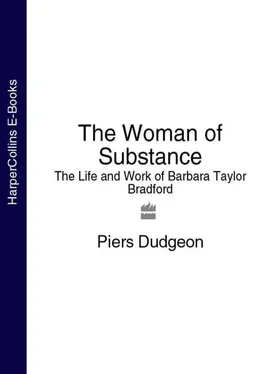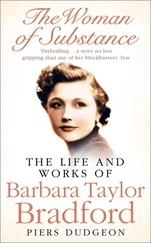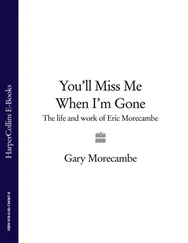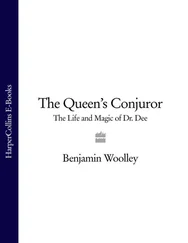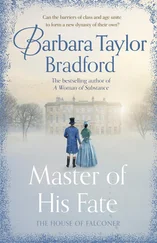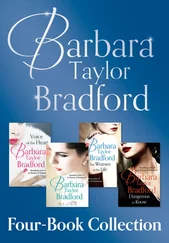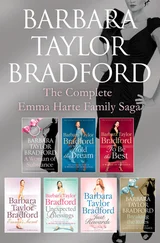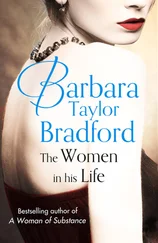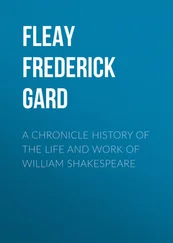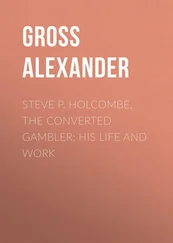Being motherless, even with the care of others in the family, Edith may have suffered from maternal deprivation, a condition believed to be as harmful as poor nourishment. It can have a child yearning throughout its life for the kind of unconditional love that only a mother can give, and which no substitute can hope to assuage. Edith may also have suffered physically, for feeding infants was mainly by mother’s breast in those days.
The family does seem to have been a close one. It was largely still intact ten years later, and some members of it remained close for a considerable time into the future. It is indeed tempting to surmise that Edith was the apple of her father’s eye. If so, it is all the more tragic that he was unable or, for some reason beyond resolution, unwilling to save Edith from the abyss into which she was to fall.
Typically for a working man of the period, John Walker stayed in one area for his entire lifetime. He was born in 1844 in Burton Leonard, a tiny village midway between Harrogate and Ripon, his parents having moved there from Pateley Bridge, ten miles to the west, where his elder sister Mary was born in 1839. After marrying, he went with his wife to live in Scotton, a village three miles to the south of Burton Leonard. Their first son, Thomas, was born there in 1865. The family then moved to Ripon in or around 1869, where siblings Elizabeth Ann, John William and Minnie were born. Then, around 1877, came the move to the outskirts of Harrogate, where first Joseph and then Edith (Barbara’s grandmother) were born. By 1891 the family had moved back to Ripon.
The city, twenty miles or so north of Leeds, lies just west of the Vale of York, which runs north–south between the North York Moors to the east and the softer Dales to the west. To anyone who doesn’t know Yorkshire, the names of these two great land masses may be misleading, because there are plenty of dales in the North York Moors and plenty of moors in the Dales. Dales are valleys; moors are high, largely unsettled tracts of wilderness, naturally enough separated by dales. Indeed, as we have seen, perhaps the most famous moor in all England – Haworth Moor – is not in the North York Moors at all, but way to the southwest, near Leeds.
In the immediate vicinity of Ripon there is some of the most beautiful countryside in all England. It was built at the confluence of three rivers. From Middleham to the north, a sense of Warwick’s struggles washes down east of the city through Wensleydale on the Ure, the river’s Celtic name – Isura – meaning physical and spiritual power. There it is met by the Skell, which is itself met southwest of the city by the River Laver.
In Act of Will , Audra refers to Ripon as ‘a sleepy old backwater’ compared to ‘a great big metropolis like Leeds’, but the description belies the tiny city’s unique and many-faceted appeal. Its population was a mere 7500 at the time of the Walker family’s incursion. Today it is little more than double that size, and retains the feel of a small, busy, rural community with tremendous reserves of history at its fingertips. There is a twelfth-century cathedral or minster, a seventeenth-century House of Correction, a nineteenth-century workhouse and debtor’s prison, old inns bent and worn by time, and, nearby, twelfth-century monastic ruins – Fountains Abbey at Studley Royal.
Bronze-age earthworks and henges to the northeast suggest human habitation thousands of years BC, but Ripon itself can be said to have first drawn breath in AD 634 with the birth of the city’s patron saint, Wilfrid, in Allhallowgate, Ripon’s oldest street, just north of what was then a newly established Celtic Christian monastery.
The monks sent Wilfrid, an unusually able boy, to be educated in Lindisfarne (Holy Island) off the Northumberland coast, where St Aidan had founded a monastery in 635. Later, Wilfrid championed Catholicism over Celtic Christianity as the faith of the Church in England, and was appointed Abbot of the Ripon monastery, then Archbishop of York. The church he built in Ripon became a ‘matrix’ church of the See of York, and his work inspired the building of Ripon Minster in 1175 and the foundation of various hospital chapels, which established the city’s definitive role in providing food and shelter for the poor and sick.
St Mary Magdalen’s hospital and chapel were built in the twelfth century on the approach to the city from the north, and had a special brief to care for lepers and blind priests. St John the Baptist’s chapel, mission room and almshouses lie at the southeast Bondgate and New Bridge approach to the city over the River Skell, which also offers a view of seventeenth-century Thorpe Prebend House, situated off High St Agnesgate in a peaceful precinct with another hospital chapel, St Anne’s, already a ruin in Edith’s time, but founded by the Nevilles of Middleham Castle. Thorpe Prebend was one of seven houses used by the prebendaries (canons) of the minster, and a house with a special place in Barbara’s memory.
When Freda brought Barbara to Ripon as baby and child, they would invariably stay at Thorpe Prebend with a family by name of Wray, who were caretakers of the house. Joe Wray was married to Freda’s cousin, Lillie, and Barbara became firm friends with Joe’s niece, Margery Clarke (née Knowles). ‘I spent a lot of weekends with Margery when I was a young girl,’ Barbara recalls, and later as teenagers they would go to dances together at the Lawrence Café in the Market Place. The Lawrence had a first-floor ballroom famous because the dance floor was sprung: ‘We used to go, she and I, to the Saturday night dance there at fifteen, sixteen . . . When I reminded her and I recalled that we stood waiting to be asked to dance, her swift retort was, “But not for long!” Apparently we were very popular.’
Margery still lives in Ripon today and took me to the spot beside Thorpe Prebend House where Freda and Margery’s father, who went to school together, used to play on stepping-stones across the Skell. Later I learned from Barbara of the celebrated occasion when, according to Freda, he pushed her in. ‘She was wearing a dress her mother Edith had dyed duck-egg blue and she dripped duck-egg blue all the way home on her white pinafore!’
Jim Gott, no obvious relation of the acquisitive Gott of Armley, but a working-class lad born seven years before Freda at 43 Allhallowgate, recalled in his memoir that playing on these stones was a popular pastime. What comes across in Jim Gott’s book, Bits & Blots of T’Owd Spot , is the fun he had as a child and the empathy he and his contemporaries enjoyed with the spirit of Ripon – past and present fusing in its ancient architecture and traditions, and the daily round. These were the riches of a life that in other ways was hard, and Freda, despite the particular difficulties attached to her childhood, would have shared in them too, and, as an adult, looked back with similar wonder.
The spirit of the place, matured over time, was celebrated on a weekly basis at the twelfth-century Market Place, with its covered stalls, self-styled entertainers and livestock pens. It features in Barbara’s novel, Voice of the Heart . Every Thursday, long before the market bell sounded at 11 a.m. to declare trade open, folk poured in from the surrounding moors and dales, and Ripon awoke to the clatter of vehicles laden with fresh produce and squawking hens, and the drovers’ fretting sheep and lowing cattle as flocks and herds made their way through the city’s narrow lanes to the colourful square on the final leg of what was often a two- or three-day journey. All came to an end at 9 p.m., as Gott recorded, when the Wakeman Hornblower announced the night watch, a tradition that survives in Ripon to this day.
Home for Edith and her family in 1891 was a small stone cottage just two minutes’ walk south of the Market Place at No. 8 Water Skellgate, a whisper from where Barbara and Margery would dance the night away half a century later. (The 1909 map in the second picture section charts the area clearly.)
Читать дальше
